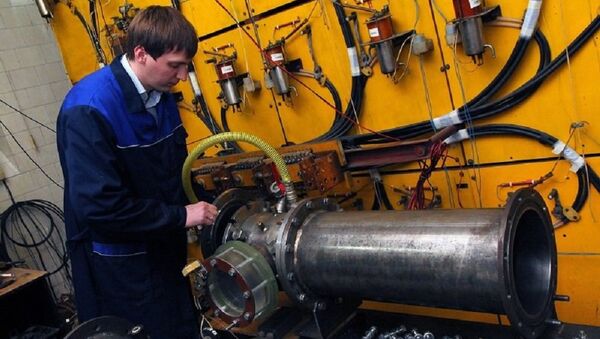The scientists believe that their approach will throw light on the combustion process of solid fuels, nanopowders, pyrotechnical mixtures and mixtures activated by ultra-high frequencies and X-rays. The results have been published in Ceramics International.
The university experts explained that aluminium nitride (aluminium combined with nitrogen) has a high potential for practical use in microelectronics due to its high electrical and thermal conductivity.
However, Alexander Ilyin, professor of the TPU Division for Natural Sciences, told RIA Novosti that the visual monitoring of high-temperature processes such as aluminium nitride synthesis is quite difficult.
"Intense background illumination makes it impossible to see the sample's surface in real time, which means the combustion cannot be controlled to obtain products with the desired characteristics", he noted.
READ MORE: Russian Scientists Develop Neural Network for 3D Printing of Metal Products
According to the scientist, this makes developing methods and equipment to diagnose the high-temperature combustion process a topical scientific task.
The TPU experts studied the high-temperature combustion of the aluminium nanopowder using the equipment they created: a laser monitor on cupric bromide fumes.
"The optic system with light intensification made it possible to exclude background illumination and provide for the high-speed video recording of the sample's surface real-time", noted Ilyin. He added that the laser monitor allowed the visualizing of changes in the morphology and optical characteristics of the aluminium nanopowder's surface.
READ MORE: Scientists Make Ultra-Strong Metallic Glasses More Pliable by Freezing
In order to facilitate the processing of high-speed video recordings, the researchers proposed their analysis of the correlation between the intensity of the light intensification output signal and time.
"We have shown that the output signal monitors in real time the emergence of combustion waves, describes their dynamics and measures how the reflection coefficient of combustion products changes", the professor added.
According to Ilyin, this characteristic of combustibles has been studied for the first time using burning aluminium nanopowder as an example.


